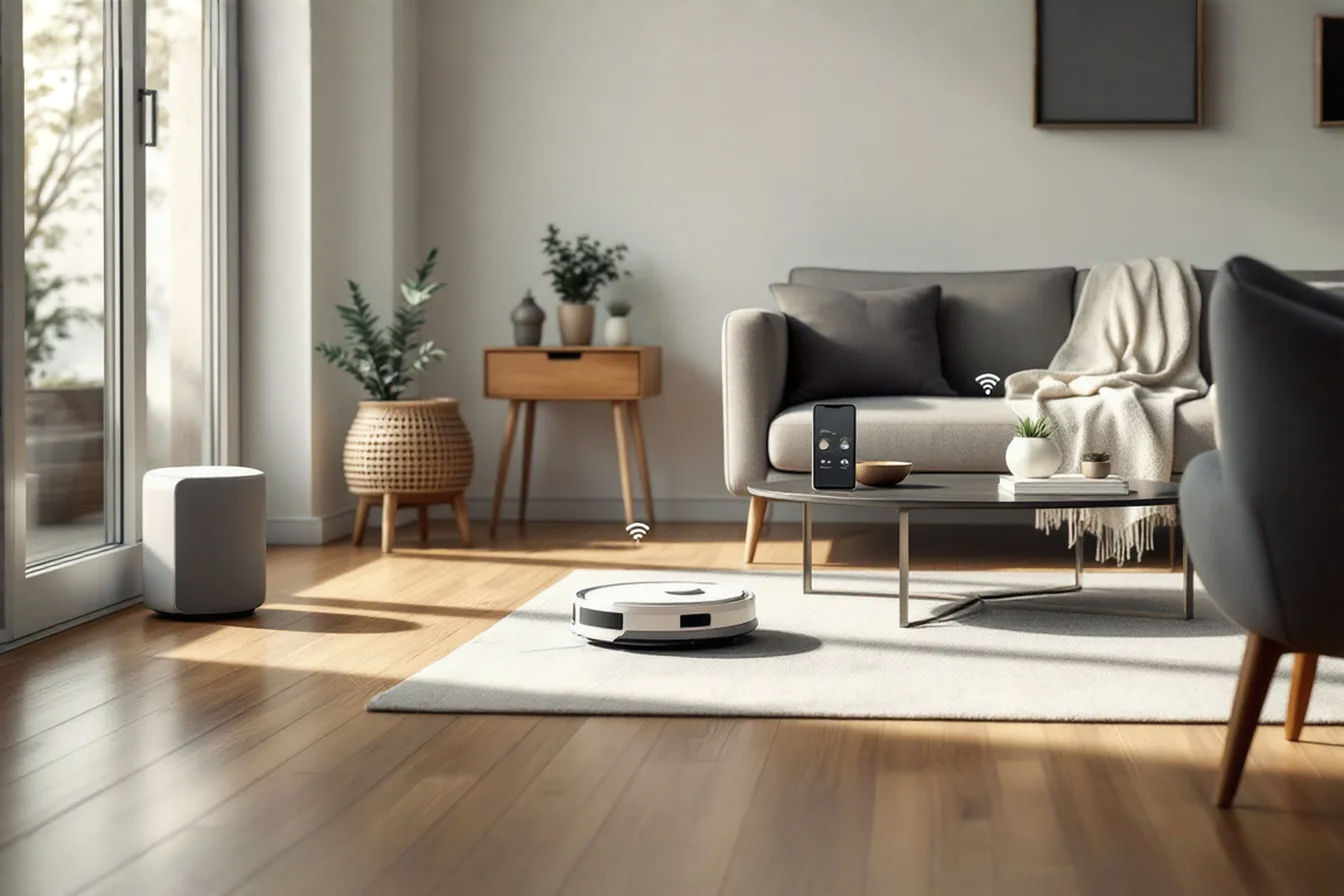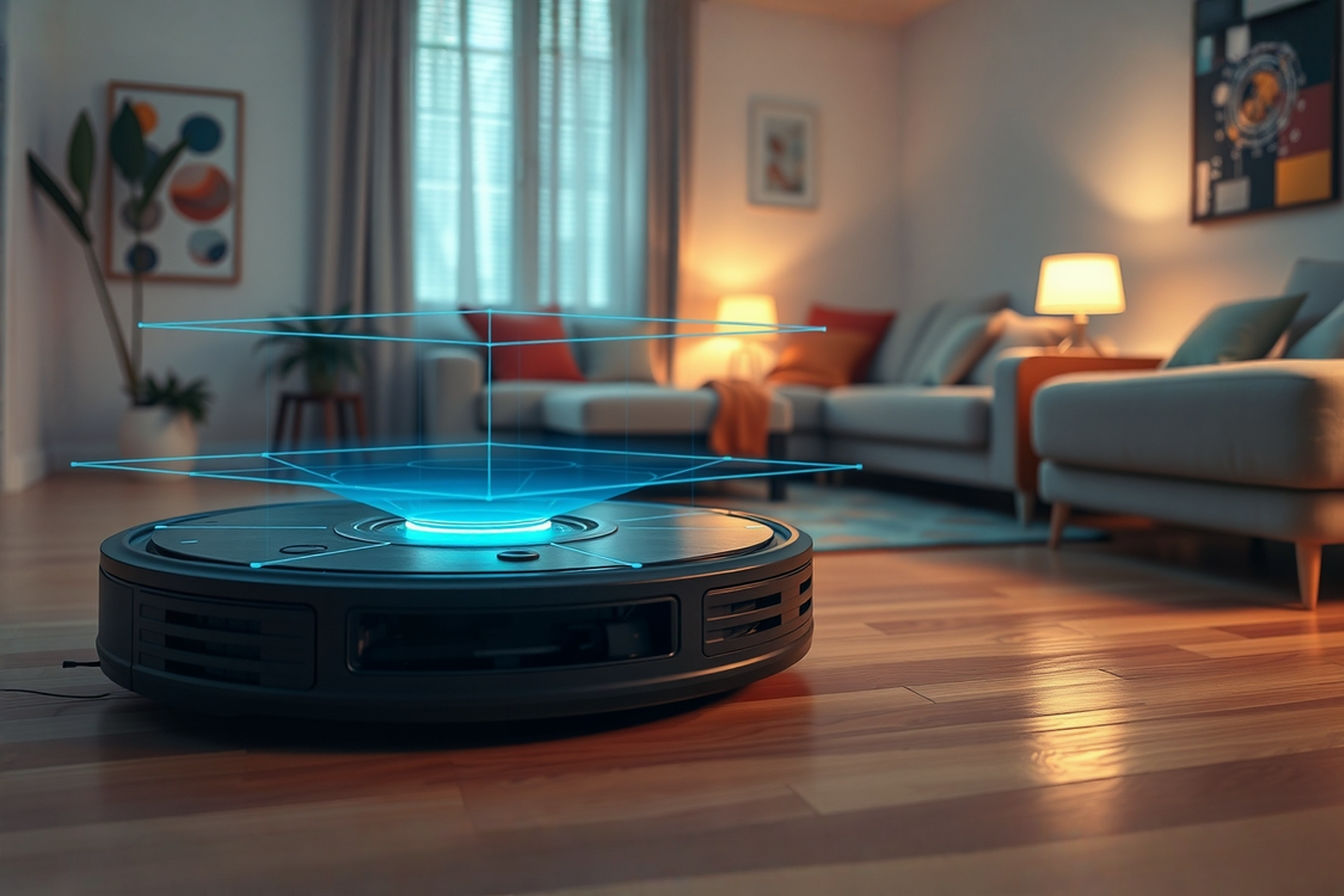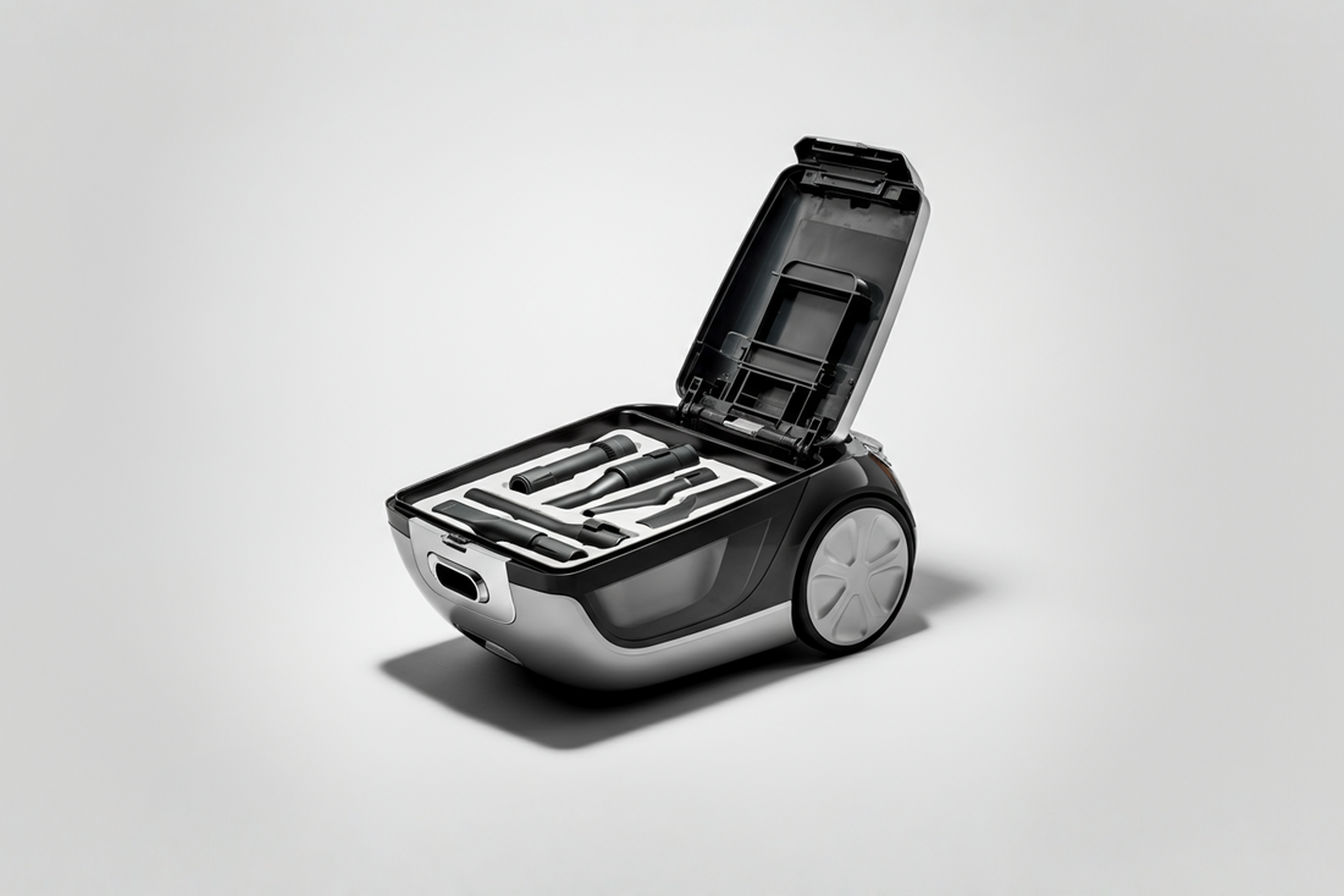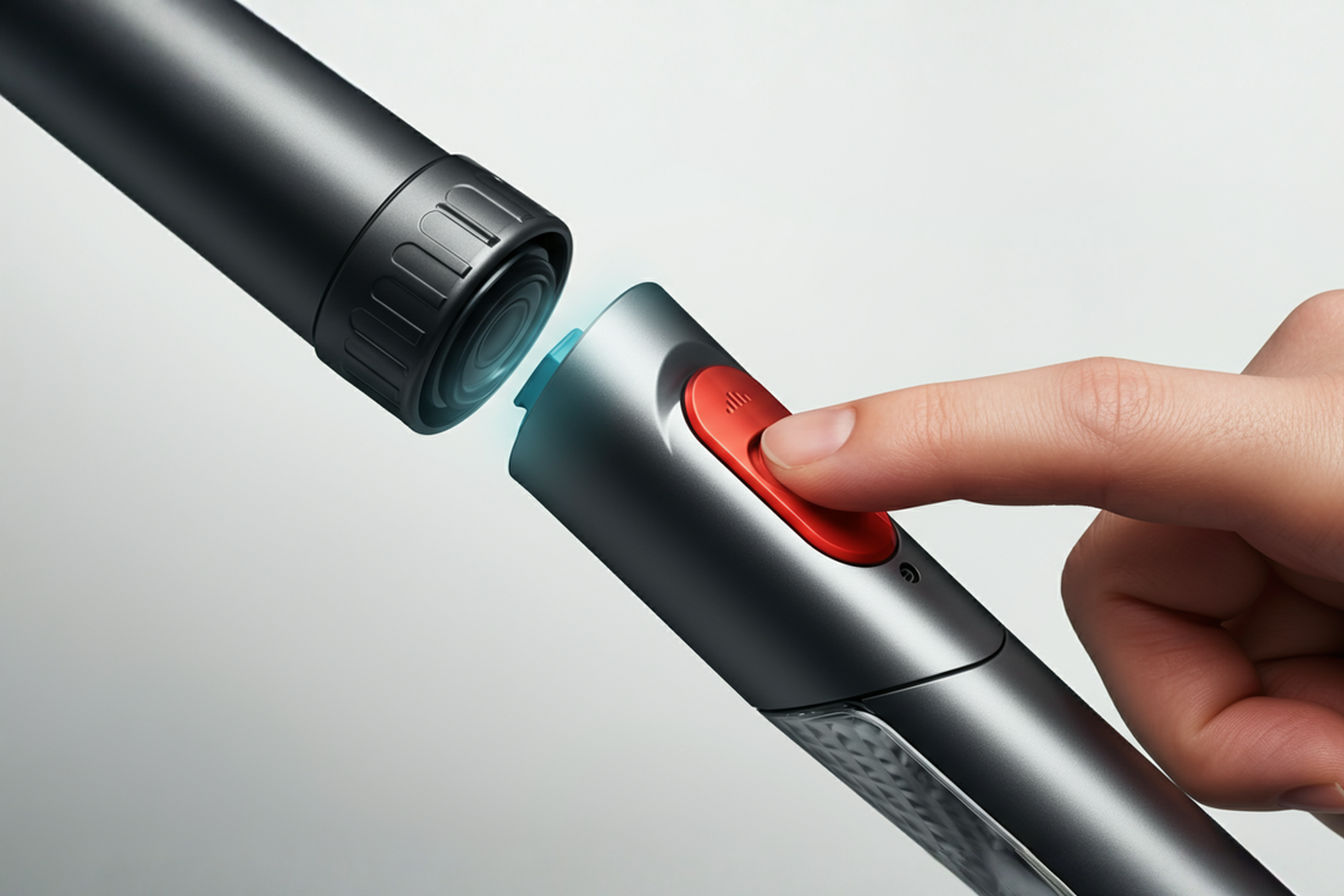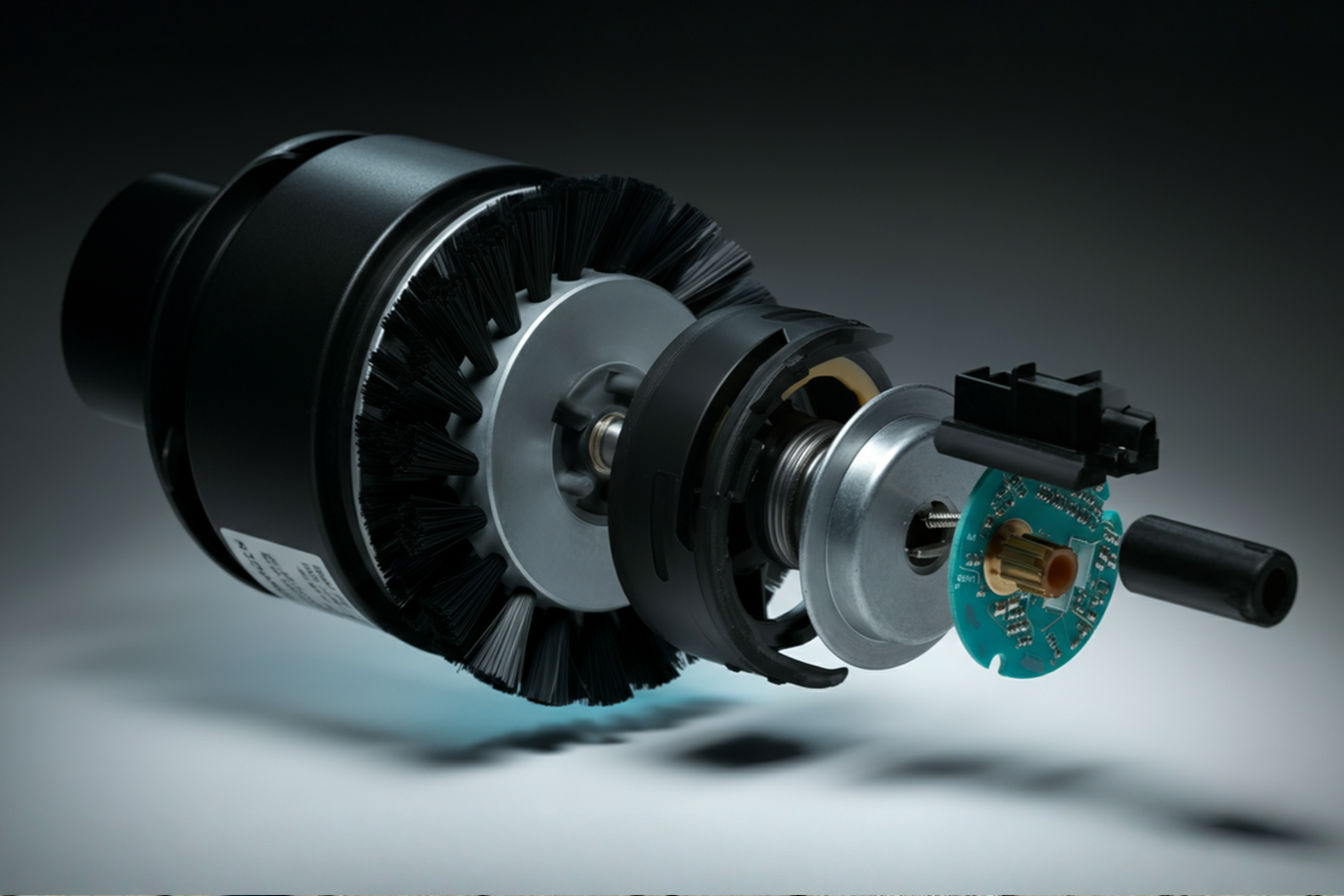Smart Vacuums Meet Smart Homes: The Ultimate Integration Guide
Smart vacuums now work seamlessly with your home’s ecosystem, creating a truly connected cleaning experience. Learn how these devices integrate to save time and make home maintenance effortless.
This post may contain affiliate links. If you make a purchase through these links, we may earn a commission at no additional cost to you.
Picture this: You’re rushing to get ready for work in the morning. As you grab coffee from your smart coffee maker, your robot vacuum quietly starts cleaning the kitchen floor. Before you leave, you say “Alexa, I’m heading out,” and your vacuum moves to clean the living room while your lights turn off and your security system activates. This isn’t science fiction—it’s cross-appliance integration at work in modern homes.
Today’s smart vacuums do much more than just clean on their own. They work with other devices in your home to make life easier. This merger of vacuum technology with wider smart home systems creates a home that almost takes care of itself.
In this guide, we’ll explore how vacuum cleaners have joined the smart home revolution. You’ll learn what makes a vacuum “smart,” how these devices talk to other parts of your home, and the real benefits of having your cleaning gadgets work together with your broader home setup. Whether you’re thinking about buying your first smart vacuum or looking to better connect the one you already have, this article will help you understand the exciting world where cleaning meets connectivity.
What Makes a Vacuum “Smart”?
Vacuum cleaners have come a long way from the bulky machines we used to push around our homes. The evolution started with basic robot vacuums that moved randomly across floors. Now, we have truly smart vacuums that think, learn, and work with other devices.
The Building Blocks of Smart Vacuum Technology
Connectivity is the backbone of any smart vacuum. These devices connect to your home internet through Wi-Fi or sometimes Bluetooth. This connection allows them to receive commands from anywhere and talk to other devices in your home.
App control puts the power in your hands—literally. Every smart vacuum comes with a smartphone app that lets you start, stop, and schedule cleaning sessions. You can control your vacuum while sitting on your couch or when you’re miles away from home.
Mapping technology helps smart vacuums understand your home’s layout. Using lasers, cameras, or sensors, these devices create a map of your rooms. Some high-end models can store multiple floor plans for multi-level homes.
Advanced sensors help vacuums detect obstacles, recognize different floor types, and avoid falls down stairs. The newest models can even spot pet waste or cords to avoid messy disasters.
From “Connected” to Truly “Integrated”
Not all smart vacuums are created equal when it comes to working with other devices. A connected vacuum can be controlled remotely through an app. An integrated vacuum goes further by working with your smart home ecosystem. It responds to voice commands, follows routines you’ve set up, and even reacts to what other devices in your home are doing.
The difference matters because true integration makes your vacuum part of your home’s brain rather than just a separate smart gadget. When devices work together, they create an experience that’s greater than the sum of its parts.
The Smart Home Ecosystem and Vacuums
To understand how vacuums fit into smart homes, let’s look at what makes up a typical smart home system.
The Heart of Your Smart Home
Most smart homes have a central hub or controller. Popular options include:
- Amazon Echo devices with Alexa
- Google Nest devices with Google Assistant
- Apple HomePod with Siri and HomeKit
- Samsung SmartThings hub
These hubs act as the central brain that connects and controls various devices. They understand voice commands and can run routines that involve multiple devices.
Speaking the Same Language
Smart home devices need to communicate with each other. They do this through various protocols, which are like languages that machines use to talk:
- Wi-Fi is the most common connection type and offers good range
- Zigbee and Z-Wave use less power and create a mesh network
- Bluetooth works for close-range connections
- Matter is a newer standard aiming to make all devices work together
Most smart vacuums use Wi-Fi to connect to your home network, which allows them to talk to your hub and other devices.
Where Vacuums Fit in the Picture
In the smart home ecosystem, vacuums play a key role in home maintenance. They connect to your hub through your home Wi-Fi network. Once connected, they can become part of:
- Morning and evening routines
- Cleaning schedules that work around your family’s habits
- Home and away scenes that adjust based on whether you’re present
- Voice-controlled environments where a simple command gets your floors cleaned
A fully integrated vacuum doesn’t just clean—it becomes part of how your home functions day to day.
Key Integration Points Between Vacuums and Smart Homes
The magic happens when your vacuum works seamlessly with other systems in your home. Here are the main ways smart vacuums integrate with your broader smart home:
Voice Control: Just Ask and It Cleans
One of the most popular features of smart vacuums is voice assistant compatibility. Commands like “Hey Google, start the vacuum” or “Alexa, clean the kitchen” let you control your vacuum without lifting a finger. This works through:
- Amazon Alexa skills
- Google Assistant actions
- Apple Siri shortcuts (on compatible models)
The best part? You don’t need to remember specific commands or app interfaces—just speak naturally.
Smart Home Routines: Coordinated Cleaning
Routines are pre-set series of actions that involve multiple devices. Your vacuum can be part of routines like:
- “Good Morning” – coffee starts brewing, news plays, and the vacuum cleans the kitchen
- “Leaving Home” – lights turn off, thermostat adjusts, security system activates, and vacuum begins cleaning
- “Movie Time” – lights dim, TV turns on, and vacuum returns to its dock to stay quiet
With routines, your vacuum knows when to work and when to stay out of the way.
Location-Based Triggers: Clean While You’re Away
Many smart home systems use geofencing, which tracks when you leave or return home. Your vacuum can use this information to:
- Start cleaning when everyone leaves the house
- Pause when someone returns home
- Clean specific rooms based on which ones aren’t occupied
This ensures your vacuum cleans when it won’t disturb anyone.
Smart Mapping and Zone Cleaning
Advanced smart vacuums create detailed maps of your home. This mapping technology works with your smart home system to:
- Clean specific rooms when needed (like the kitchen after cooking)
- Avoid rooms where people are sleeping or working
- Focus on high-traffic areas more frequently
- Remember furniture placement and adjust cleaning patterns
This targeted approach means better cleaning results with less disruption.
Working with Smart Sensors
Many homes have motion sensors, door sensors, or occupancy detectors. Your vacuum can use data from these sensors to:
- Avoid rooms where motion is detected
- Clean entryways after the front door has been opened multiple times
- Focus on dining areas after meal times
- Stay away from a baby’s room during nap time
This awareness of what’s happening in your home makes your vacuum seem almost human in its thoughtfulness.
Real-World Applications and Scenarios
Smart vacuum integration shines in daily life. Here are some common scenarios where cross-appliance integration makes a real difference:
The Morning Rush Hour
It’s 7:00 AM on a weekday. Your smart home system:
- Turns on your kitchen lights
- Starts your coffee maker
- Raises your smart blinds
- Commands your vacuum to clean the kitchen floor
By the time you’re dressed, your coffee is ready and your kitchen floor is clean. Your vacuum knew to clean early because your calendar showed an early meeting.
The Work-From-Home Day
You’re working from your home office. Your smart vacuum:
- Knows from your calendar that you’re in meetings from 9-11 AM
- Cleans the living room and kitchen during this time
- Avoids your office area until your lunch break
- Pauses if it hears your voice on a call
The system understands your schedule and cleans around it without disturbing your work.
The Pet Owner’s Helper
For pet owners, smart vacuums are game-changers:
- Your vacuum runs when your smart pet door signals your dog has gone outside
- It focuses on areas where your pet camera has detected shedding
- It avoids the corner where your smart pet feeder is located during meal times
- It cleans more often in rooms where your pet spends the most time
The integration means less pet hair around the house with minimal effort on your part.
The Family Home Organization
Busy family homes benefit from smart coordination:
- The vacuum cleans the kitchen after your smart dishwasher finishes a cycle
- It avoids the playroom during scheduled playtime hours
- It tackles the entryway after school hours when kids have come home
- It works with your robot mop to handle different floor cleaning needs
These coordinated efforts keep your home clean despite the chaos of family life.
Advanced Features and Future Trends
Smart vacuum technology keeps getting better. Here are some cutting-edge features and trends to watch:
AI-Powered Cleaning
The newest vacuums use artificial intelligence to:
- Learn your family’s habits over time
- Predict when areas will need cleaning
- Suggest optimal cleaning schedules
- Recognize and avoid new obstacles more intelligently
This learning ability means better cleaning with less input from you.
Self-Maintenance Systems
Advanced vacuums are becoming more self-sufficient with:
- Self-emptying bins that can go weeks without needing attention
- Self-cleaning brushrolls that prevent hair tangles
- Automatic charging and resuming of cleaning jobs
- Filter cleaning reminders based on actual use
These features reduce the maintenance burden significantly.
Cross-Device Awareness
Future vacuums will be even more aware of other devices:
- Working with air quality monitors to clean when dust levels rise
- Coordinating with smart door locks to clean entryways after guests leave
- Communicating with laundry machines to clean under beds after sheet-changing day
- Integrating with smart kitchen appliances to clean after cooking sessions
This awareness creates a truly responsive home environment.
Privacy and Security Evolution
As vacuums collect more data about our homes, we’re seeing improvements in:
- More local processing instead of cloud dependence
- Better encryption of home layout data
- Options to limit what information leaves your home
- Clearer privacy controls in vacuum apps
These advances help address concerns about having devices that map and monitor our living spaces.
Setting Up Your Smart Vacuum in a Smart Home
Getting your vacuum to work well with your other smart devices takes some setup. Here’s how to make the process smooth:
Basic Requirements
Before you start, make sure you have:
- A stable Wi-Fi network that reaches all areas you want to clean
- A smartphone or tablet for app control
- A smart home hub if you want voice control or routines
- Your Wi-Fi password handy
- The latest version of your vacuum’s app
Without these basics, integration will be difficult or impossible.
Connection Process
Most smart vacuums follow a similar setup pattern:
- Unbox and charge your vacuum completely
- Download the manufacturer’s app
- Create an account or log in
- Follow the app’s instructions to connect to Wi-Fi
- Allow the vacuum to map your home (this may take several cleaning runs)
- Link the vacuum app to your smart home system (Google Home, Alexa, etc.)
- Test basic voice commands
This process typically takes 30-60 minutes, including the initial charging time.
Common Integration Challenges
Some issues you might face include:
- Wi-Fi dead zones where your vacuum loses connection
- Compatibility limits between different brands or systems
- App permissions that need adjusting for full functionality
- Voice command syntax that feels unnatural at first
Most of these challenges have solutions, from Wi-Fi extenders to updated command lists from the manufacturer.
Optimization Tips
To get the most from your integrated vacuum:
- Run initial mapping runs during daylight hours for better results
- Create virtual boundaries around problem areas like pet bowls or cord clusters
- Name your rooms in both your vacuum app and smart home system using the same names
- Start with simple commands and routines before creating complex ones
- Schedule regular software updates during times when the vacuum won’t be needed
These steps help ensure your vacuum works smoothly with your other devices.
Popular Smart Vacuum Brands and Their Integration Capabilities
Not all smart vacuums offer the same level of integration. Here’s how the major brands compare:
iRobot Roomba
Roomba models offer:
- Excellent Alexa and Google Assistant integration
- Strong mapping capabilities that work with room-specific commands
- IFTTT support for custom integrations
- Some models work with Apple HomeKit
- Proprietary software that learns cleaning patterns over time
Roomba tends to be the gold standard for smart home integration but comes at a higher price point.
Ecovacs Deebot
Ecovacs provides:
- Good voice assistant compatibility
- Advanced mapping with multi-floor support
- Integration with most major smart home systems
- Some models include built-in security camera functions
- Competitive pricing for the features offered
Ecovacs balances affordability with solid smart home features.
Roborock
Roborock models feature:
- Excellent mapping technology
- Strong Google Home integration
- Good Alexa compatibility
- Some models include mopping functions
- Detailed app control options
Roborock has made a name for itself with precise navigation and mapping.
Shark
Shark offers:
- User-friendly app interface
- Good basic voice assistant compatibility
- Some models with self-emptying bases
- More modest integration features
- Generally lower price points
Shark is a good entry point for those new to smart vacuums.
Connectivity Comparison
When choosing a brand, consider:
- Which smart home system you already use
- Whether you need advanced mapping features
- If you want combined vacuum/mop functionality
- Your budget constraints
- Whether you prefer simplicity or advanced features
The right choice depends on your existing smart home setup and specific needs.
Benefits and Limitations of Today’s Integrated Vacuums
Smart vacuum integration offers many advantages but also has some drawbacks to consider.
The Upside of Integration
Time savings top the list of benefits. When your vacuum works with your other devices and runs automatically, you save hours of cleaning time each month. A study by J.D. Power found that robot vacuum owners save an average of 4.5 hours per month on floor cleaning.
Convenience means your floors get cleaned without you having to think about it. Your home stays cleaner because regular maintenance happens automatically.
Better cleaning results come from smart scheduling. Vacuums can clean more often, leading to less dirt buildup over time.
Reduced energy use happens when vacuums clean efficiently and only when needed, rather than wasteful whole-house cleaning when only certain areas are dirty.
The Current Limitations
Cost remains a barrier. Truly integrated smart vacuums start around $400 and can exceed $1,000 for top models.
Learning curve challenges can frustrate some users. Setting up routines and understanding voice commands takes time to master.
Reliability issues can occur when Wi-Fi is unstable or when cloud services have outages.
Privacy concerns exist because these devices map your home and some models include cameras. The data collected is typically encrypted, but some users remain uncomfortable.
Maintenance requirements don’t disappear. You’ll still need to empty bins (on non-self-emptying models), clean filters, and occasionally rescue a stuck vacuum.
Is It Worth It?
For most households, the benefits outweigh the limitations. The initial setup time and cost are offset by the ongoing time savings and convenience. However, the value proposition is stronger for:
- Busy families with limited cleaning time
- Pet owners dealing with constant hair and dander
- People who entertain frequently
- Those with mobility issues who find manual vacuuming difficult
- Tech enthusiasts who enjoy creating automated home systems
The technology continues to improve, addressing many current limitations with each new generation.
Conclusion
Smart vacuums have transformed from novelty gadgets to essential parts of the modern smart home. Their ability to work with other devices creates a truly integrated cleaning experience that saves time and effort.
As we’ve explored, today’s smart vacuums offer impressive features—from voice control and coordinated cleaning routines to AI-powered navigation and self-maintenance systems. When connected to your broader smart home ecosystem, these devices do much more than just clean floors; they become part of how your home functions.
The future looks even more promising, with vacuum technology trending toward greater intelligence, better self-sufficiency, and deeper integration with other home systems. We’re moving toward homes that truly maintain themselves with minimal human intervention.
Is a smart vacuum right for everyone? Not necessarily. The cost and complexity might not make sense for very small homes or for those who rarely use technology. But for most households, the benefits of integration—convenience, time savings, and better cleaning results—make smart vacuums a worthwhile investment.
As cross-appliance integration continues to improve, your vacuum will become an even more valuable team player in your home’s ecosystem. The days of thinking about vacuums as standalone cleaning tools are behind us. Today, they’re intelligent collaborators helping to make our living spaces cleaner and our lives easier—often without us having to lift a finger.

